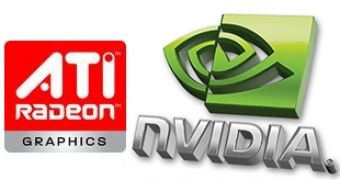As soon as Windows 7 comes to the market, the graphics cards will have to go hand in hand with DirectX11, which means that both ATI and NVIDIA will have to make cards compatible with the new standard. Considering the technological advancements each company has announced so far, it seems that the first to get there might be ATI.
As previously reported, Advanced Micro Devices' graphics division managed to tape out the first card manufactured under the 40nm fabrication process, which brings the company a step closer to DirecX11. The first cards to feature support for the standard are expected to be 40nm parts and to pop up in the second half of the next year. By that time, NVIDIA will be able to unveil its own designs under the smaller process, yet ATI is still said to be ahead.
A few months ago, NVIDIA announced its plan to skip DirectX10.1 and jump on the next standard from the beginning. According to the Santa Clara company, DirectX11 will include all parts from DirectX10.1, which means that its cards will need the support for the standard really bad. Moreover, the in-game physics will be redefined by the future technology, and NVIDIA is reported to be pushing its PhysX hard on this.
Nevertheless, ATI's RV740, the first 40nm chip, has already been sampled and, although it’s expected to come as a mainstream part, it appears to feature a lot of performance power as it includes a 256-bit memory interface and supports GDDR5 memory. Previous news showed that the red team planned to release its first 40nm cards sometime in March next year, and the company appears to be on track with that plan.
History seems to be repeating itself, as ATI moved to the new manufacturing process faster than NVIDIA, the same as it did with 55nm fabrication. This time, the green company might keep close to ATI with the development of the process, yet we already know that the Sunnyvale-based plans a high-end 40nm chip, something which NVIDIA is not expected to be able to do from the beginning.
Shrinking the die translates into providing better thermal envelope and more performance, and ATI is already known to deliver parts that have these features. Once it has completed the 40nm process, we should see some nice cards from the manufacturer, and there are voices that expect the company to come up with a GPU that might feature a clock speed set over the 1,000MHz milestone.
At the same time, we have grown accustomed to the fact that NVIDIA does not rush to adopt new fabrication technologies, while also coming to the market with rather big cards. Its monolithic cards are known to be big enough, and the company's future chips are also reported to feature great sizes. On the other hand, compared to ATI Radeon HD 4870 X2, the two-chip card from NVIDIA is shorter, although heavier, which means that there might be some changes in size as well.

 14 DAY TRIAL //
14 DAY TRIAL //